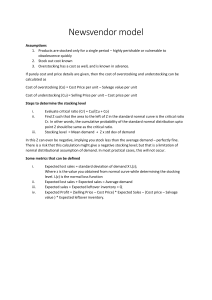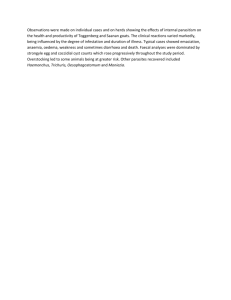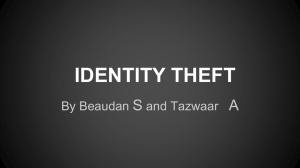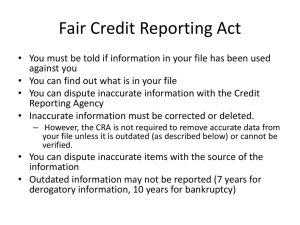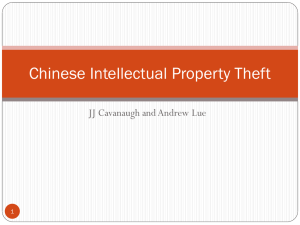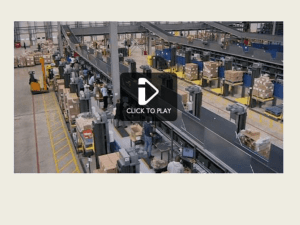3. Stock management - Portlethen Academy
advertisement
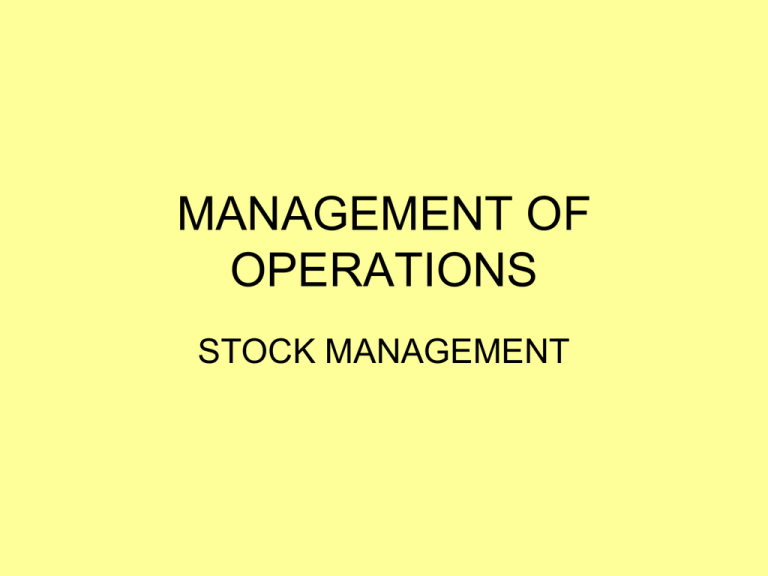
MANAGEMENT OF OPERATIONS STOCK MANAGEMENT LEARNING INTENTIONS AND SUCCESS CRITERIA LEARNING INTENTIONS: SUCCESS CRITERIA: • I can describe the DIFFERENT STOCKS a business may hold. I understand what is • I can explain the costs of involved in effective OVERSTOCKING. stock management. • I can explain the costs of UNDERSTOCKING. • I can describe the different activities that are involved in the STOCK CONTROL PROCESS. WHAT IS STOCK MANAGEMENT? STOCK MANAGEMENT is all about trying to make sure that the business has a STOCK LEVEL that prevents OVERSTOCKING PROBLEMS and UNDERSTOCKING PROBLEMS. Let’s find out what some business experts think about stock management: http://www.bbc.co.uk/learningzone/clips/a-shortintroduction-to-production-methods/10966.html WHAT IS STOCK? Stock in any business is an UNUSED AMOUNT of something, and the main types of stock are: • RAW MATERIALS (basic parts still to be used in production) • WORK IN PROGRESS (products that have been started but not yet finished) • FINISHED GOODS (products that are complete and ready to be sold to consumers) OVERSTOCKING Overstocking means that a business has bought in MORE stock than it regularly needs and so will face the following problems due to extra unnecessary stock: • High labour costs for security staff to prevent theft of stock • High labour costs for warehouse staff to manage stocks • High storage costs for large premises to store stock • High costs of insurance for large amounts of stock • Less chance of wastage or theft being noticed and dealt with • Risk of losing money on stock that becomes obsolete eg if trends change (social factor) • Money is tied up in stock that could be used for other purposes within the business eg buying new equipment to increase production UNDERSTOCKING Understocking means that a business has NOT bought in enough stock to continue with its ordinary activities and so will face the following problems from a lack of stock: • Production may have to stop • Stockouts may occur (this means there is no stock for customers) leading to decreased sales and profits, less customer loyalty and a damaged business reputation • Unexpected customer orders cannot be met STOCK CONTROL Once a business has decided how much stock to have (to prevent over or under stocking), then it will have to make sure that stock is re-ordered when necessary and is looked after to prevent wastage or theft. Businesses will do this through a process known as STOCK CONTROL. STOCK CONTROL SYSTEMS The work to keep track of what is happening to stocks can be done either MANUALLY (by hand using a record known as a STOCK CARD) or by COMPUTER eg using a simple Spreadsheet or sophisticated stock control software. STOCK LEVELS A MAXIMUM STOCK LEVEL is set in line with consumer demand and storage space available. This should prevent overstocking. A MINIMUM STOCK LEVEL is set in line with normal demand and lead times from suppliers. This should prevent understocking. A RE-ORDER LEVEL is set between the maximum and minimum levels taking account of the minimum level, lead time and normal demand. This should prevent stock-outs. STOCK DIAGRAM Stock levels can be shown in a chart as follows: ADVANTAGES OF COMPUTERISED STOCK CONTROL • Computers can accurately calculate stock figures quickly and these can be updated continually if the system is linked to an EPOS sales system • Computers may be able to replace staff in stock control which saves on wages • Computers can automatically remind staff when the reorder level has been reached • Reminding staff of when to reorder should lower the chance of running out of stock • Computers can automatically reorder stock to prevent any chance of staff forgetting • The information gathered from computerised stock records can help with decision making about stock eg if products are not selling well, use a special promotion • The need for physical stock checks is minimised, although they still need to be done at least once a year to check the accuracy of the computerised data which will not show events such as theft or damaged stock. USE OF BAR CODES Bar codes are now used to identify products and the contents of boxes of products being delivered. This makes the checking of stock when it is delivered much quicker as the bar code will be scanned and this will automatically update the computerised stock records. When items are sold or removed from stock, they can be scanned again to automatically reduce the amount in the stock records. JUST-IN-TIME STOCK CONTROL Some manufacturers use the Just-in-Time system of stock control eg car manufacturers. Here there is no storage of stock at all, thus saving money on warehousing and all its Associated costs. Stock is ordered just in time for when it is needed in the manufacturing process. This system could not work without very reliable suppliers that are located close to the manufacturing base. Although money is saved on warehousing, due to frequent small orders, bulk-buying discounts will be unavailable and administration costs will be higher. JUST-IN-TIME STOCK CONTROL Let’s watch a video clip about how JIT stock control works in practice: http://www.bbc.co.uk/learningzone/clips/justin-time-delivery/11381.html TASK Complete Worksheet 33 in your jotters.
